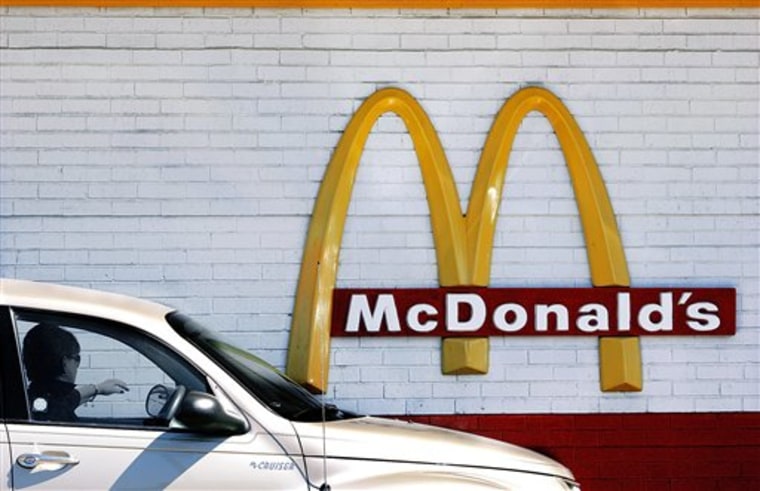Beef may not be what's for dinner at your favorite restaurant come 2009.
Restaurants, now working to secure supply and price contracts for meat and other commodities for the upcoming year, are expecting big increases in food costs — increases that will likely lead to menu changes and price hikes.
Some chains are already adjusting their menus to reflect current high costs for both beef and chicken. CKE Restaurants Inc., which operates the Hardee's and Carl's Jr. chains, stopped offering Double Cheeseburgers in its 2 for $3 promotion at the end of August and replaced them with Jumbo Chili Dogs and Hot Ham 'N' Cheese Sandwiches to avoid selling pricey beef at a lower price.
Even fast-food leader McDonald's Corp. is considering making some changes to its popular dollar menu — either by changing the items on the menu or bumping up prices — saying the cost of selling meat at such low prices might be too high.
The decision to raise prices or change menus could have some harsh repercussions, especially because more diners are already eating at home to avoid pricey restaurant food. With the stock market dropping and consumers questioning whether their retirement savings will be available when the time comes, paying more for a meal out may be even harder to stomach.
But for restaurateurs, there may not be much of a choice.
"This is the most challenging environment for restaurant operators regarding food price inflation on the wholesale level for almost 30 years," said Hudson Riehle, senior vice president of research at the National Restaurant Association.
Riehle said wholesale food prices have jumped 8.7 percent year-to-date through August. That's on top of a 7.6 percent increase in 2007.
In 2006, in comparison, wholesale food prices climbed just seven-tenths of one percent, Riehle said.
Menu prices, meanwhile, have gone up just 4.2 percent year-to-date through August — a hefty hike for thrifty consumers but not enough of a boost to completely offset higher food and ingredient costs.
Beef and other proteins have arguably hit restaurant margins the hardest in this past year. Beef and veal costs have gone up about 19 percent through August from last year and processed chicken has jumped about 3.5 percent, according to Riehle.
Restaurants typically either pay for their meat on the spot market, which can be volatile because prices are based on supply and demand, or they negotiate longer-term contracts with suppliers that set the price.
The contracts typically last between 90 days and a year. Traditionally, the longer contracts are favored because they offer a guaranteed supply and price. Some suppliers, though, have been more reticent about signing the longer 12-month contracts for 2009.
At a Bank of America investor conference last month, Guy Constant — senior vice president of finance at Chili's Grill & Bar owner Brinker International Inc. — said suppliers and buyers are both "a little more hesitant to lock in for longer time periods."
Constant said some suppliers signed contracts for 2008 that were overly beneficial for restaurants and are hoping to use today's higher prices as a basis for price hikes in new contracts. Meanwhile, some restaurant companies are loath to lock in prices based on today's market.
Tyson Foods Inc., a major beef supplier and producer, is looking for long-term supply partnerships with shorter-term pricing arrangements "to allow for shared risk and benefit with our customers," said spokesman Gary Mickelson.
Companies generally don't release the prices they pay in contracts, but Wall Street analysts are already warning investors that 2009 could be a tough year on margins.
RBC analyst Larry Miller said in an analyst note earlier this month that both beef and chicken prices are expected to jump between 5 percent and 8 percent in 2009.
Part of the problem stems from protein producers' plans to cut back on production in the next year to avoid paying more for animal feed, which has been a huge weight on profits as the cost of corn has skyrocket. Beef producers cut supply by slaughtering more animals, which sends more product to market initially but reduces the size of herds to lower future inventory levels. Chicken producers, meanwhile, set fewer eggs to hatch.
A dip in production means a smaller supply, which typically boosts prices and results in higher costs for restaurants that buy their meat on the spot market. Even those that contract for meat can be affected since the spot market price can provide a guide for the contract price.
To offset the costs, some restaurants are already planning price increases.
Chipotle Mexican Grill Inc. has said it will raise its prices in its fourth quarter to offset an expected 7 percent to 10 percent rise in food costs next year. McCormick & Schmick's Seafood Restaurants Inc. has also said it will boost its prices due to higher commodity costs.
